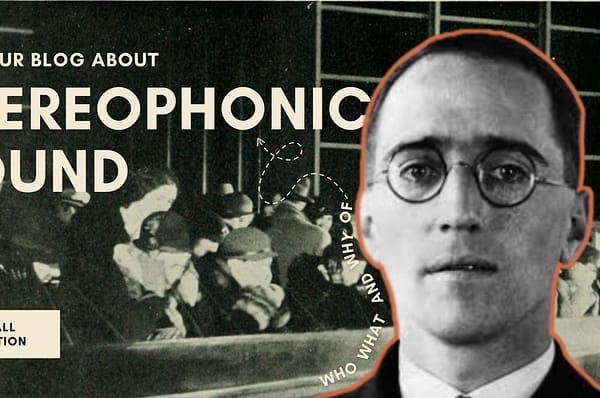By Reva Thakkar
Jazz music and culture have had a significant and enduring global impact. Not only on the evolution of music in various nations, but also on social movements, fashion, and cultural identity.
When jazz music came to be associated with the “Jazz Age” or “Roaring Twenties” in the 1920s and 1930s, it was marked by flapper outfits, fedora hats, and fashionable dance movements. It gave rise to the “jazz chic” fashion trend in France, which merged jazz-inspired aspects with conventional French attire.
Not just the fashion industry, jazz has managed to leave its imprint on literature and visual art. Countless books and poetry have been written on jazz. And we are well aware of the end number of beautiful paintings and photos of jazz players that have been captured. Moreover, jazz has influenced cinema, helping to create new subgenres including jazz musicals and film noir.
Jazz has been crucial in removing boundaries between many cultures and fostering the development of new musical genres. Being used as a vehicle for political and social change in many nations, it has ignited social movements and given voice to underrepresented groups. For instance, jazz artists John Coltrane and Nina Simone used their music to advance social justice and equality during the American civil rights movement. Jazz impacted several cultures and countries, like:
France:
Jazz had a significant impact on French culture in the early 20th century, particularly during the Jazz Age of the 1920s and 1930s, when American jazz musicians such as Sidney Bechet and Josephine Baker first introduced the music to French audiences. French musicians started fusing jazz elements into their music, giving rise to the distinctive genre known as “French jazz.”
One of the key figures in the development of French jazz was the legendary jazz guitarist Django Reinhardt. Born in Belgium in 1910, he moved to Paris in the 1920s and quickly became a fixture on the city’s jazz scene. Reinhardt’s unique style, which blended jazz with his Romani heritage, helped to establish the “gypsy jazz” or “jazz manouche” style that remains popular in France to this day.
In the 1980s and 1990s, a new wave of French jazz musicians emerged, including saxophonist Philippe Mate and pianist Michel Petrucciani. These musicians helped to bring French jazz to a global audience and cemented France’s reputation as a centre of jazz innovation.
Brazil:
Brazilian jazz, popularly known as “Bossa Nova,” is a unique and influential musical tradition that emerged in Brazil in the late 1950s and early 1960s. Combining elements of jazz, samba, and other Brazilian musical styles, Bossa Nova has had a profound impact on the global jazz scene and continues to be a vibrant and dynamic genre today.
One of the key figures in the development of Bossa Nova was the famous guitarist and composer, João Gilberto. His debut album, “Chega de Saudade,” released in 1959, is widely considered one of the most essential recordings in the history of Bossa Nova. The album helped to establish Bossa Nova as a major force in Brazilian music and inspired a wave of new musicians who went on to further develop the genre.
Japan:
Jazz has significantly impacted Japan’s cultural landscape since it was first introduced to the country in the early 20th century. It quickly became popular among Japanese musicians and audiences, and over time, Japan developed a unique and thriving jazz scene that had a profound impact on the global jazz community. One of the key figures in the development of jazz in Japan was saxophonist Sadao Watanabe. He began playing jazz as a teenager and quickly gained a reputation as one of the country’s most talented musicians.
In the 1980s and 1990s, a new wave of Japanese jazz musicians emerged, including pianist Hiromi Uehara and saxophonist Akira Jimbo. These musicians helped to further popularize jazz in Japan and bring a fresh, innovative approach to the genre.
Today, jazz remains an important part of Japan’s cultural landscape, with a thriving scene of musicians and fans. Japanese jazz musicians continue to push the boundaries of the genre, incorporating elements of traditional Japanese music, electronic music, and other genres into their work.
South Africa:
Jazz has spread quickly among South African musicians and audiences, after its first introduction in the early 20th century. One of the key figures in the development of jazz in South Africa was pianist Abdullah Ibrahim, also known as Dollar Brand. He began playing jazz as a teenager and soon gained a reputation as one of the country’s most talented musicians. Ibrahim became one of the most important figures in South African jazz, collaborating with a wide range of artists and blending traditional African musical styles with jazz and other genres.
Today, jazz remains an important part of South Africa’s cultural landscape and continues to push the boundaries of the genre, incorporating traditional African music, hip-hop and other genres as well.
Cuba:
Jazz had a significant influence on Cuban music in the mid-20th century, particularly through the fusion of jazz and Cuban rhythms such as mambo and cha-cha. This fusion, known as “Latin jazz” or “Afro-Cuban jazz,” was popularized by musicians such as Dizzy Gillespie and Chano Pozo in the 1940s and has since become a major part of Cuban music.
Jazz also played a role in the Cuban Revolution, with Fidel Castro and other revolutionary leaders embracing jazz as a symbol of cultural identity and political liberation.
India:
The fusion of jazz and Indian classical music, also known as “Indo-jazz” or “jazz-fusion” music created a major impact. This fusion has played an important role in the development of contemporary Indian music and culture, as well as in promoting cultural exchange between India and the rest of the world.
One of the earliest and most influential Indian jazz musicians was Joe Pereira, a percussionist who played with some of the biggest jazz names in the United States in the 1950s and 1960s before returning to India in the late 1960s. He formed the Joe Pereira Quartet and began to incorporate Indian classical music into his jazz compositions, creating a unique fusion that would later inspire many other musicians in India.
In the 1970s, British guitarist John McLaughlin formed the groundbreaking group Shakti, which combined Indian classical music with jazz and rock. Shakti’s innovative sound and virtuosic performances helped to popularize jazz fusion in India and around the world. Another influential figure in the development of Indo-jazz was tabla player Zakir Hussain, who collaborated with a wide range of jazz and world music artists, including McLaughlin, saxophonist George Brooks, and percussionist Mickey Hart. Hussain’s virtuosic playing and deep understanding of both Indian classical music and jazz have helped to bridge the gap between these two musical traditions.
Indo-jazz has also inspired many Indian musicians to explore their cultural heritage in new ways. One example is the Indian jazz-rock band Advaita, which formed in Delhi in 2004 and has been hailed as one of the most exciting new acts in Indian music. Combining jazz, rock, and Indian classical music, Advaita has created a sound that is both innovative and rooted in Indian tradition.
Overall, jazz music has had a profound impact on Indian music and culture, inspiring new forms of musical expression and promoting cultural exchange between India and the rest of the world. Indo-jazz has become an important part of contemporary Indian music and has helped to bring Indian culture to a wider audience. Jazz continues to be an important force in Indian music, and its influence can be heard in a wide range of genres, from classical Indian music to Bollywood film scores.
Conclusion:
Overall, the impact of jazz music and culture has been profound and diverse, influencing the development of music and culture in many countries around the world. Jazz has inspired new forms of artistic expression, promoted social change and equality, and contributed to the development of new styles and genres of music. Today, jazz continues to be an important part of cultural expression and a source of inspiration for musicians and artists worldwide.






